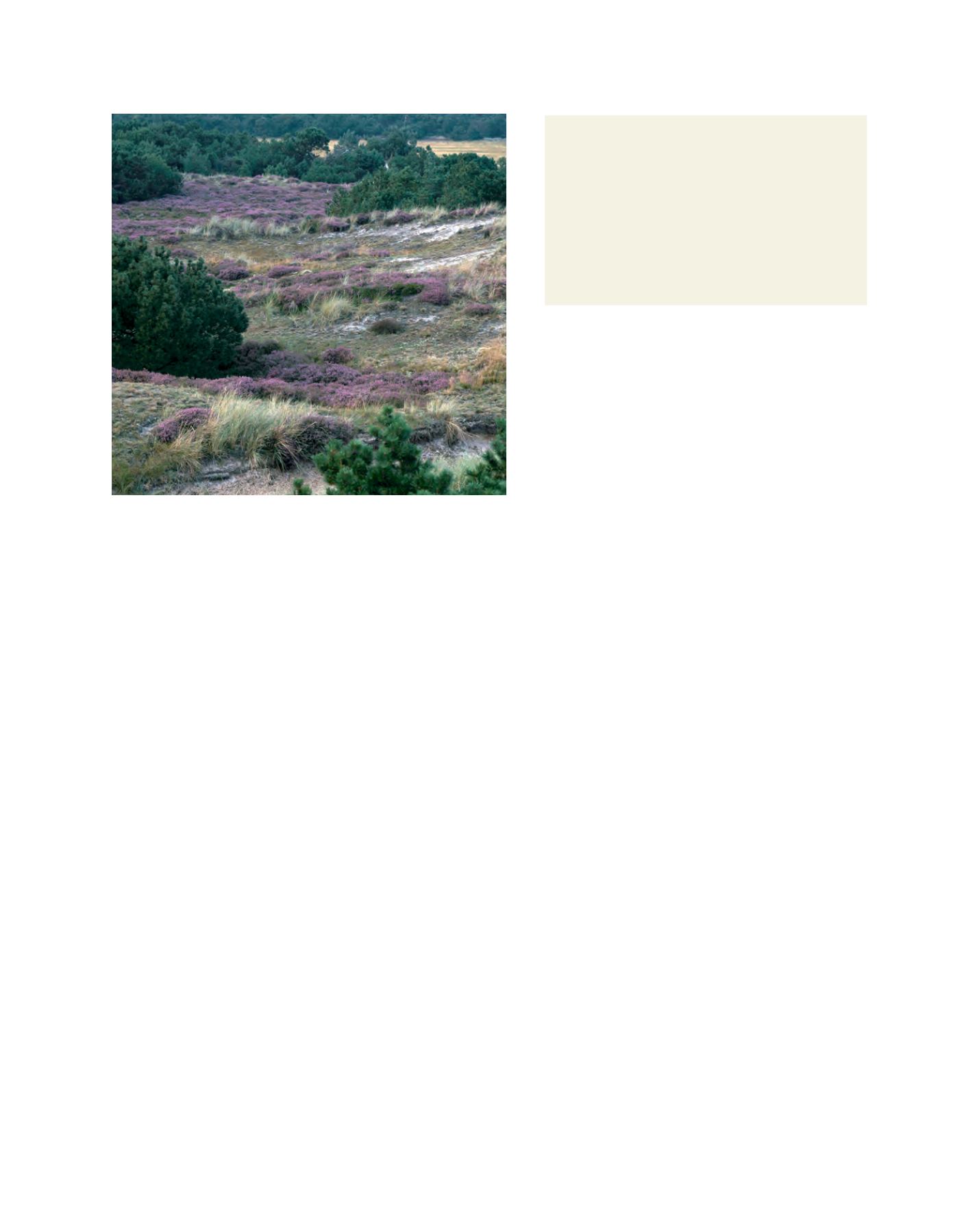

[
] 180
New National Forest Programme
In 2002 the Government developed and adopted a new national
forest programme.
The main objective was to promote the principles for sustain-
able forest management, with due consideration for economic,
ecological and social values and needs. The programme included
a package of voluntary operational level guidelines for sustain-
able forest management in Denmark. It was developed through a
transparent and consensus-based process of broad involvement of
stakeholders.
Key objectives included (but were not limited to) the promotion of:
• Conversion to close-to-nature forest management principles
• Development of viable economic framework conditions for
forestry
• Opportunities for recreation and nature experience in the forests
• Afforestation aiming for 20-25 per cent coverage of forest
landscapes in the course of 80-100 years
• Effective information sharing and improved access to knowledge
• International cooperation in support of SFM.
Key instruments to promote and ensure the implementation of the
programme included:
• Adaptation of new legislation, including a new national Forest Act
in 2004 (establishing promotion of SFM as the key objective)
• Dialogue and stakeholder involvement
• Research and development
• Awareness raising, dissemination of information and training
• Economic incentives, including grants schemes
• Further engagement in international cooperation related to forests
• Special obligations and action plans supporting SFM in state
forests (including an action plan on ‘close-to-nature forestry’ as
well as certification of all Danish State Forests, against both FSC
and PEFC standards).
State of play and future challenges
Although still applicable and relevant for many
of today’s activities, the Danish National Forest
Programme might not sufficiently cover all relevant
challenges for sustainable forest management in 2011.
New and emerging focus areas that have gained in
importance include:
• Utilization of the forests for different recreational
purposes and for nature experiences (many and
sometimes conflicting types)
• Enhanced focus on the role of forests in a green
economy
• New demands for forest products, not least
wood for renewable energy, which provides both
opportunities and challenges (where lessons from
the past will be kept in mind)
• Protection of nature sites with high conservation
value (‘Natura 2000’ areas), where new
legislation and new measures are currently being
implemented
• Increased focus on demand-side measures as a
means to promote legal and sustainable forest
management, including implementation of new EU
regulation on forest law enforcement, governance
and trade as well as the promotion of voluntary
guidelines for public procurement of legal and
sustainable timber
• New developments in the international cooperation
related to forests, including on REDD+ and LULUCF
and not least the very recent Oslo ministerial
mandate for negotiating a legally binding agreement
on forests in Europe.
In 2010, the former Danish Government estab-
lished an advisory board with a broad composition
of members, representing a number of different
stakeholder groups. The board got the mandate to
provide recommendations for a future forest policy in
Denmark. It finalized its work in 2011 by delivering a
report with more than 40 concrete recommendations.
Since the report was launched, a new government has
taken office in Denmark following a general election in
September 2011. At the time of writing, no decision on
the report and the recommendations from the board
has been taken.
Nowadays many Danish landscapes are characterized by a mixture of dune plantations
and heather, like here in the Danish National Park at Fanø, an island west of Jutland
Image: ©Bert Wiklund
Denmark: facts and figures
• Population: 5.5 million
• Land area: 4,239,000 hectares
• Forest area: 587,000 hectares (14 per cent)
• Net annual change rate (2005-2010): +1.25 per cent
• Growing stock: 113 million m
3
• Net annual increment: 5.8 million m
3
• Annual fellings: 2.4 million m
3
• Privately owned forests: 69 per cent
• Contribution of forestry to GVA: 0.1 per cent
• Contribution of manufacturing of wood and articles in
wood (in per cent of total GVA): 0.4 per cent
Source: State of Europe’s Forests 2011
















